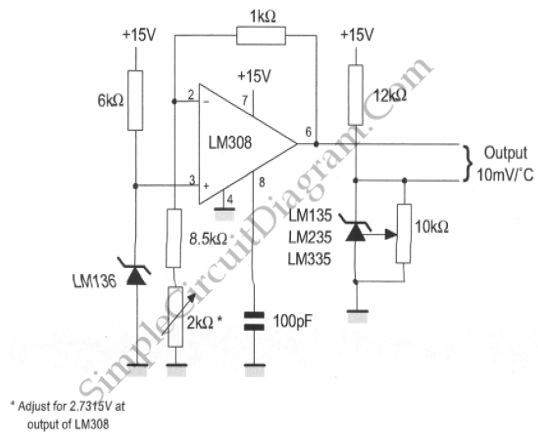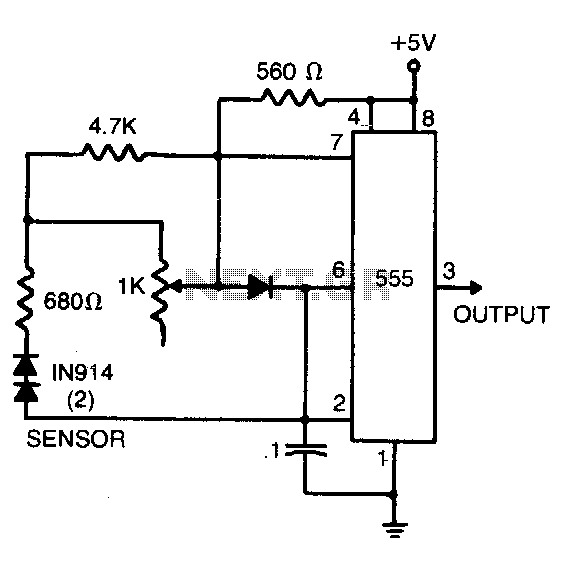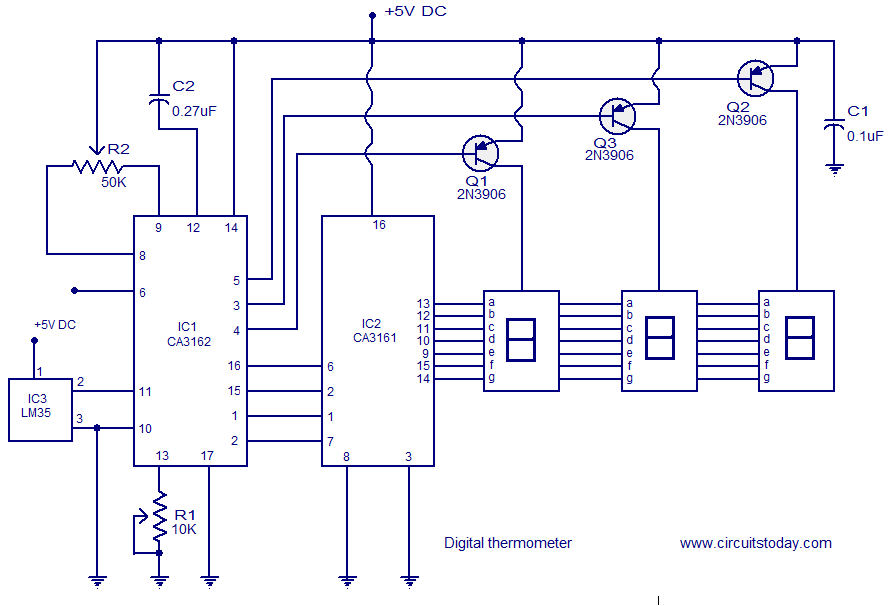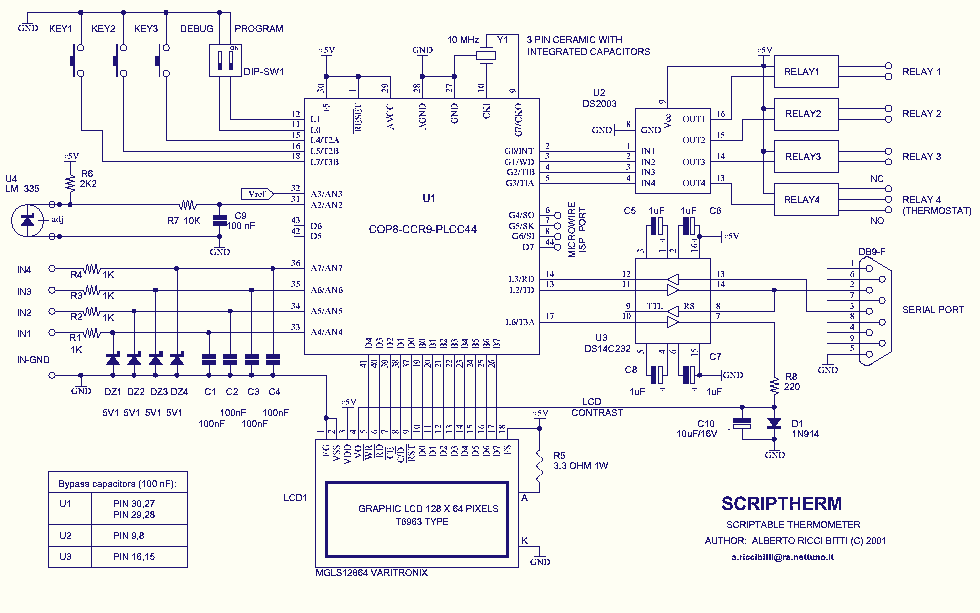
LM135/235/335 Centigrade Thermometer

The LM135/235/335 temperature sensor is designed for ease of absolute temperature reading, providing all positive values for any frequency. This is why a voltage of 2.7315V is observed at 0 degrees.
The LM135/235/335 series of temperature sensors are precision devices that offer a linear voltage output proportional to the absolute temperature in Kelvin. The LM135 is designed for operation over a temperature range of -40°C to +100°C, while the LM235 and LM335 extend this range, accommodating higher temperatures. The output voltage from these sensors is typically 10 mV per Kelvin, allowing for straightforward temperature measurement.
In practical applications, these sensors can be integrated into various electronic circuits for temperature monitoring and control. The output voltage can be interfaced with analog-to-digital converters (ADCs) for digital temperature readings, or it can be used in conjunction with operational amplifiers to create custom temperature measurement systems.
To enhance the performance of the LM135/235/335 sensors, it is advisable to include bypass capacitors close to the power supply pins to filter out noise and stabilize the voltage supply. Additionally, incorporating a resistor in series with the output can help protect against short circuits and reduce the impact of loading on the sensor's output.
The LM135/235/335 sensors are also characterized by low power consumption, making them suitable for battery-operated devices. Their robustness and reliability make them ideal for applications in HVAC systems, automotive temperature monitoring, and industrial process control.
Overall, the LM135/235/335 temperature sensors provide an effective solution for accurate temperature measurement, with straightforward integration into a wide range of electronic systems.LM135/235/335 temperature sensor is designed ease absolute temperature reading, giving all positive value for any frequency, that`s why we read 2.7315V at 0.. 🔗 External reference
The LM135/235/335 series of temperature sensors are precision devices that offer a linear voltage output proportional to the absolute temperature in Kelvin. The LM135 is designed for operation over a temperature range of -40°C to +100°C, while the LM235 and LM335 extend this range, accommodating higher temperatures. The output voltage from these sensors is typically 10 mV per Kelvin, allowing for straightforward temperature measurement.
In practical applications, these sensors can be integrated into various electronic circuits for temperature monitoring and control. The output voltage can be interfaced with analog-to-digital converters (ADCs) for digital temperature readings, or it can be used in conjunction with operational amplifiers to create custom temperature measurement systems.
To enhance the performance of the LM135/235/335 sensors, it is advisable to include bypass capacitors close to the power supply pins to filter out noise and stabilize the voltage supply. Additionally, incorporating a resistor in series with the output can help protect against short circuits and reduce the impact of loading on the sensor's output.
The LM135/235/335 sensors are also characterized by low power consumption, making them suitable for battery-operated devices. Their robustness and reliability make them ideal for applications in HVAC systems, automotive temperature monitoring, and industrial process control.
Overall, the LM135/235/335 temperature sensors provide an effective solution for accurate temperature measurement, with straightforward integration into a wide range of electronic systems.LM135/235/335 temperature sensor is designed ease absolute temperature reading, giving all positive value for any frequency, that`s why we read 2.7315V at 0.. 🔗 External reference





